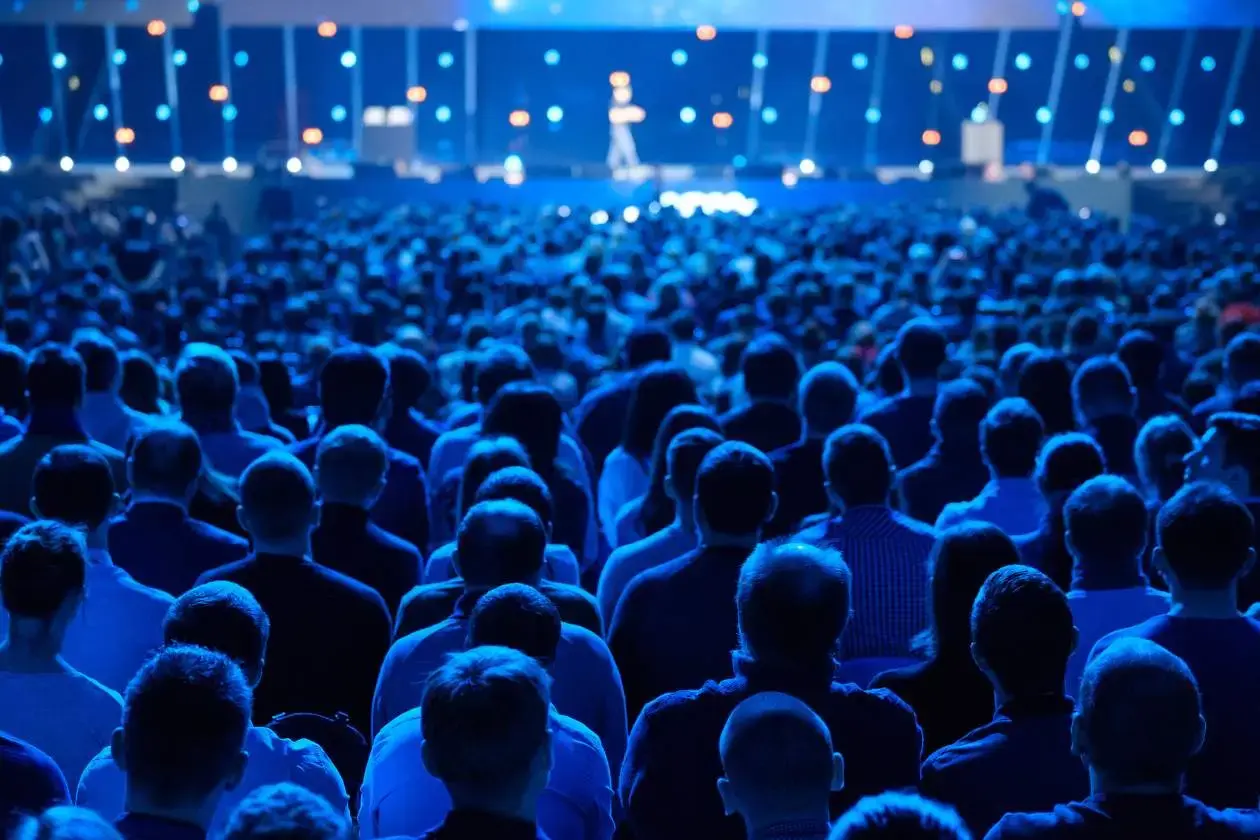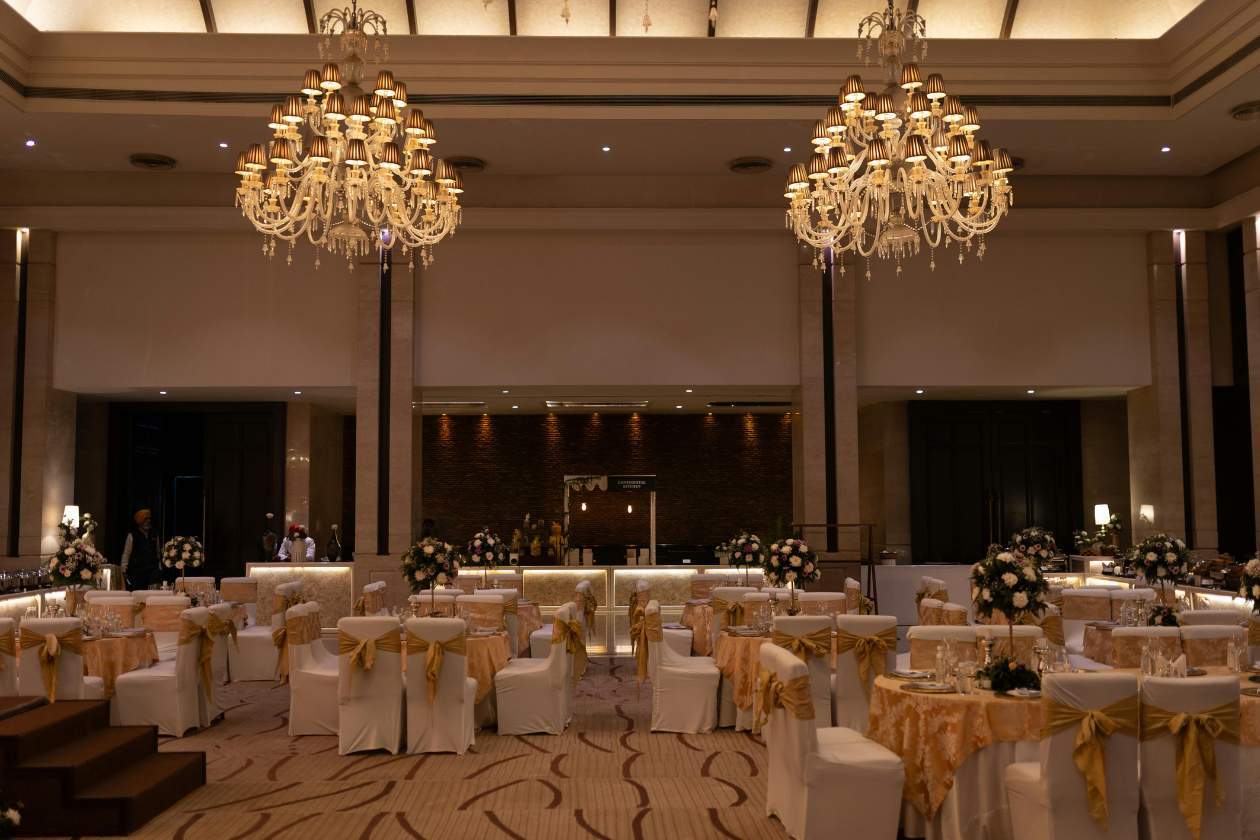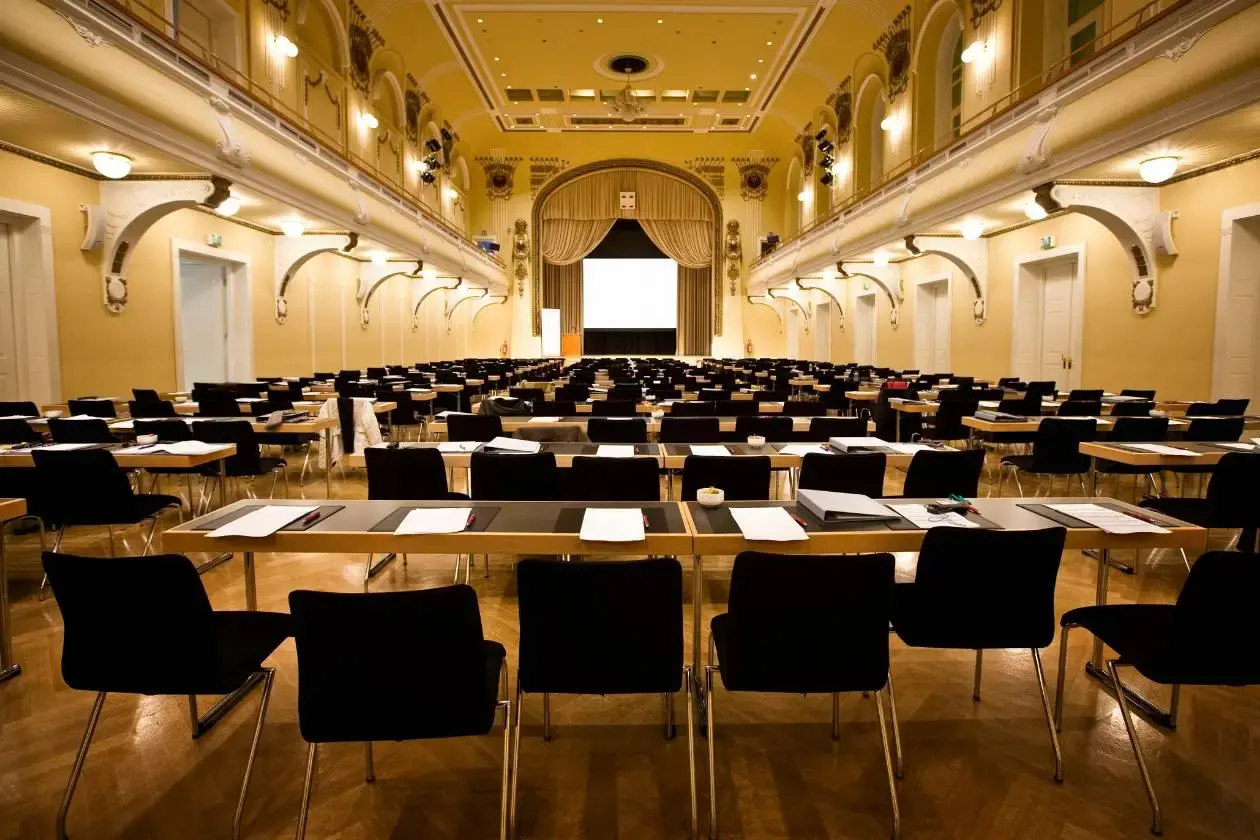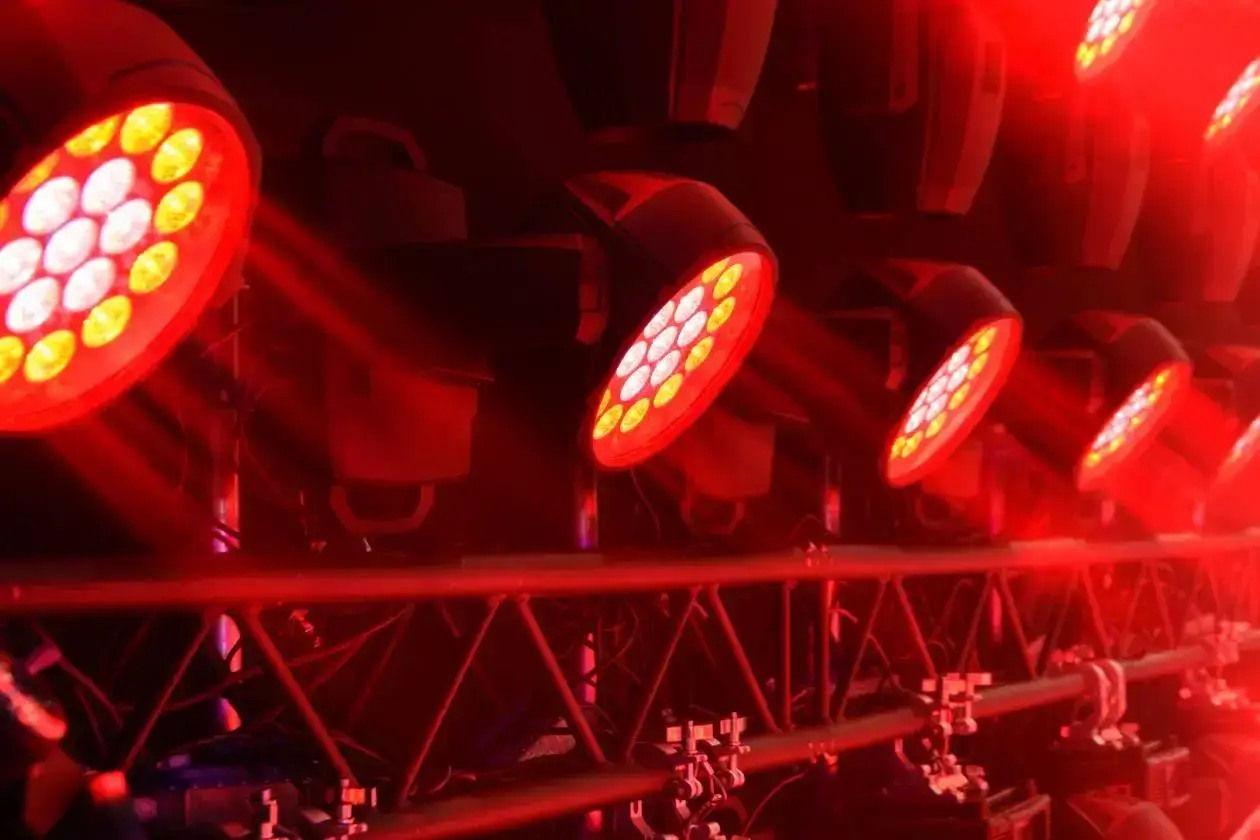A conference lives or dies by its sound and visuals. From the keynote’s first sentence to the final Q&A, the experience depends on whether people can hear, see, and follow what’s happening.
And it shouldn’t matter if they’re seated in the front row, or all the way at the back of the venue.
A well-planned conference AV setup supports your presenters, keeps your audience engaged, minimises disruptions, and gives your event the professional edge it needs.
Whether you’re staging a multi-day summit or hosting a 500-person AGM, your AV system needs to scale confidently and respond smoothly to unexpected changes.
What a Conference AV Setup Needs for Large Events
Big events need more than a microphone and a screen. A reliable setup brings together the right team and tools. And carefully matches them to the space and schedule.
Audio Delivering Clear Sound Across the Room
Good sound starts with the room. A flat-floor space with wall-to-wall seating needs very different coverage to a tiered lecture theatre.
Large venues typically use line array speakers to carry audio across long distances, with smaller fill speakers to cover side zones. Microphones vary by session. Lapel or headset mics for presenters, handhelds for roving MCs, and boundary or table mics for panel discussions. A live audio operator manages the mix, adjusting levels in real time to avoid feedback and balance voices.
Most setups also include hearing assistance systems. These are typically small receivers that allow guests to hear through headsets or neck loops. And in many venues, they aren’t optional; they’re part of making events accessible.
Visuals Making Sure Everyone Sees the Same Thing
Your visuals need to reach the whole room, not just the front few rows. That starts with screen size and viewing angles, but also depends on lighting, seating layout, and the type of content you’re showing.
Most large events use either high-lumen projectors or LED walls. Here’s how they compare:
| Feature | High-Lumen Projector | LED Wall Display |
| Brightness | 7,000–20,000 lumens needed in bright rooms | Extremely bright; visible in daylight |
| Image Clarity (At Distance) | Good, but softer at long range | Crisp at all distances with 2.6–3.9 mm pitch |
| Room Lighting Requirements | Best in dim or controlled lighting | Works well in ambient or bright rooms |
| Setup Footprint | Requires throw distance and projection zone | Modular wall; fits tight spaces better |
| Cost (Rental) | Lower for single-screen setups | Higher, but scalable and more durable |
| Ideal Use Case | Presentations in controlled rooms | High-impact plenaries, hybrid/live-streamed events |
Other key elements include slide playback and switching between content types (slides, videos, camera feeds), plus screens facing the stage so speakers can see what the audience sees. These are often called confidence monitors, and they help presenters stay on track without turning away.
Control Systems and Live Switching
For events with multiple rooms or complex agendas, central control becomes essential. Whether it’s a fixed control booth or a portable tech kit (called a flypack), it lets operators switch between video inputs, adjust audio zones, cue lighting, and manage overlays for hybrid sessions.
A typical crew setup might include a show-caller directing session flow, a visual operator switching cameras and slides, and a backup laptop ready to go if anything fails. AVisual’s teams often bring duplicates of critical gear and test every channel before doors open. This helps to reduce downtime if something goes wrong mid-session.
Planning Tips for Your Next Large-Scale Conference
Even with a great venue and the right gear, poor planning can trip things up.
- Start by understanding the room. Ceiling height, shape, and materials all affect how sound travels and where screens can be placed. Share your event schedule early, especially if it includes panels, live Q&A, award presentations or hybrid elements. This allows the AV team to prep accordingly.
- Slides should be in widescreen (16:9) and submitted ahead of time. Any videos should be tested in their original resolution, not streamed. If speakers are using their own devices, you’ll need the right adapters and a chance to test them live.
- A full tech run-through the day before can catch issues you can’t fix on show day. Like poor sightlines, wireless interference, even mismatched resolutions. It also gives your presenters confidence that everything’s ready.
- AV for large events often comes with unique constraints, from bump-in schedules to overlapping sessions and multi-room layouts. These should all be considered and allowed to shape your setup plan early on.
For large rooms with 8–12 metre ceilings, AVisual often recommends line array speakers paired with either high-lumen projectors or 2.6 mm LED walls. And if live image magnification is needed, we suggest adding a camera relay. If your event spans several rooms or includes hybrid access, your setup will need to scale accordingly, with more crew and tighter on-site coordination.
Get a Reliable Team on Board Early
AV setup is only half the story.
Execution is even more important.
At large events, the same team who helped plan your system should be the ones setting it up, running the room, and solving any issues in real time. That’s the benefit of working with AVisual. We manage your setup from start to finish, with experienced crew on-site from the first bump-in to final pack-down.
And we’ve worked in many of the major conference venues around Sydney. That means fewer surprises, faster setup, and smoother handover.
We’ve delivered conference audio visual solutions for national summits, multi-day corporate events, and roadshows. With each tailored to the venue and audience.
Let’s Make Your Next Conference Look and Sound the Part
Request a quote or speak with our team about conference AV solutions tailored for your venue and audience.
Conference Audio Visual FAQs
What is included in a typical conference AV setup?
A full-scale conference AV setup includes a PA system with distributed speakers, a live-mixing desk, microphones for presenters and panels, and large-format visual displays – either projectors or LED walls depending on the space. Behind the scenes, there’s also gear for content playback, switching, and screen control, along with on-stage monitors to support speakers. Other tools like hearing loops, camera relay, countdown timers, and hybrid streaming kits may be added depending on the event format. Most importantly, it’s all managed by a crew who stays on-site to run and monitor the setup throughout the event.
How early should I book AV for a large event?
Booking your AV provider six to eight weeks ahead gives you enough time to plan layout, confirm schedules, and avoid clashing with other major events. If your program involves multiple rooms, simultaneous sessions, or hybrid streaming, it’s best to start even earlier. AV teams need to understand your venue, build equipment lists, and coordinate with other suppliers like staging and power. Booking early also helps lock in high-demand gear such as LED panels, wireless kits, or long-throw lenses, which may not be available last-minute during busy periods.
Do I need both projectors and LED walls?
No. Most events use one or the other. Projectors are cost-effective for single screens in darker rooms where lighting can be controlled. LED walls are brighter, more durable, and better suited to rooms with lots of ambient light or where high impact is needed. You may occasionally use both, for example, an LED wall in the main room and projection in breakouts. But it’s not common to use both in the same space. AVisual will assess your layout, content type, and sightlines before recommending the right display format.




